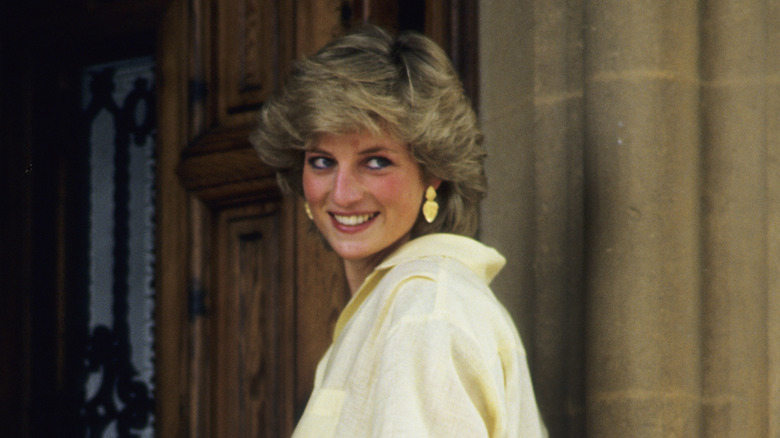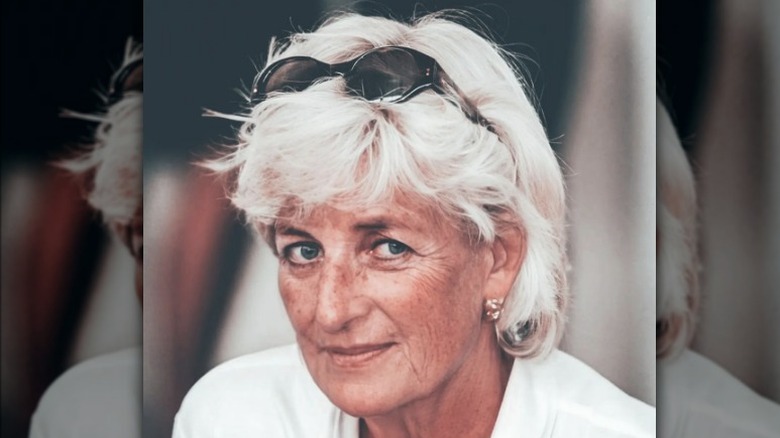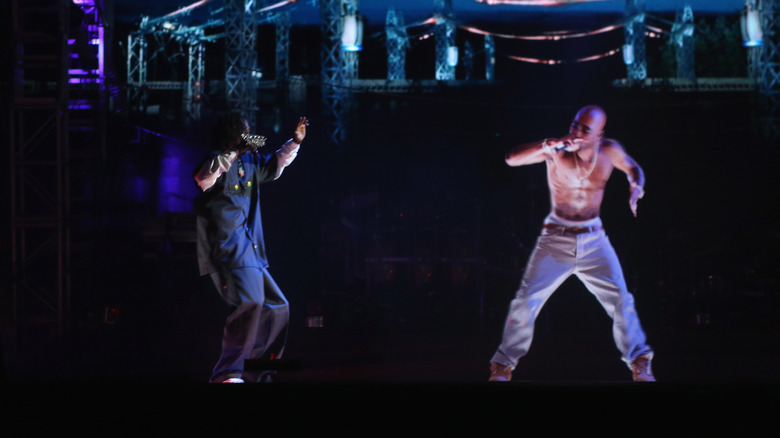Princess Diana Fans Have Something To Say About This AI Rendering Of Her In The Future
There's no dearth of quirky filters out there that make a person look like an older version of themselves or turn an adult's face into a fun child-like version. But AI-based image generators like Dall E-2, Midjourney, and Stable Diffusion have truly changed the game from wobbly AR filters to photorealistic stills. Istanbul-based photographer Alper Yesiltas recently set social media on fire with a fictional AI-assisted photography project in which he imagined how famous personalities would have looked today if their lives hadn't come to a tragic end at a young age.
Titled "As If Nothing Happened," the project was created using AI generator Remini (via Upworthy), while the results were further polished using editing tools like VSCO and Adobe Lightroom. "I wanted to see some of the people I missed again in front of me and that's how this project emerged," Yesiltas wrote regarding the endeavor. The list includes a total of 10 names, from music stars like Michael Jackson, John Lennon, and Tupac Shakur to actors like Heath Ledger and Bruce Lee.
The stunning realism in the photos, especially in the still of Nirvana lead Kurt Cobain, generated a lot of buzz as the project soon went viral. Ever since, Yesiltas has experimented with more celebrities like Paul Walker and Amy Winehouse, but one image in particular that has drawn some hot criticism is that of Princess Diana, the deceased wife of King Charles, who tragically died in a car accident in 1997.
This isn't how we remember her
The photo in question, which was shared on Instagram, attracted some hot comments. The biggest point of contention is that the former member of the British royal family, who would otherwise be 61 years old today, would've looked much better than how the AI-generated photo imagined her. Some users remarked that the image makes her appear way older than what she may have actually looked like today.
"Diana would only be 61 now and likely would have taken great care of herself so I think she would look younger than the rendering," says one of the comments. While some targeted the age inaccuracy depicted by the wrinkles, others simply labeled it as far from believable. Admirations aside, the leading emotion appears to be that the people should be remembered the way they were enshrined in the public's collective memory, and not as an age-accelerated depiction cooked up by an AI.
In the case of Diana, Princess of Wales, she was only 36 and in her prime when she met an untimely fate in Paris. The backlash is not unfounded, as she was known for her beauty and considered a fashion icon back in the day. Likewise, this isn't the first time the royal family has been the subject of AI technologies, either. A golden ratio analysis based on ancient Greek beauty standards that was performed using advanced facial mapping technology ranked Princess Diana as the most beautiful royal.
Technology has given us glimpses of the dead before
The image of an aged Diana isn't the first time tech has revived a deceased person (for lack of a better term), though other tributes may have spawned less controversy. The best example of this is probably holograms, and how they have been used to give fans a taste of how a deceased performer would have looked live. Back in 2012, music fans at Coachella got a huge surprise when Tupac Shakur appeared on stage around 18 years after his death.
According to The Mary Sue, the hologram is created by projecting an image onto an angled reflective surface. The surface then reflects the projection onto a transparent screen, which creates the illusion the audience sees. As the screen is transparent, other performers can also be seen behind the projection.
The hologram itself wasn't created using old footage of the rapper, but was instead built from the ground up and synced to music. At the time it was estimated a show featuring a similar hologram would cost anywhere between $100,000 and $400,000 to produce. The hologram of Tupac wasn't performing alone — instead it shared the stage with the very real, very much still alive Dr. Dre and Snoop Dogg. The whole performance went off without a hitch, though the exact details of how virtual Tupac's performance was synchronized so well with the non-virtual performers on stage haven't been released. Like Diana, Tupac died young. The West Coast artist was assassinated in Las Vegas back in 1996. However, the hologram certainly wasn't an aged version of the artist, as it showed a recreation of Tupac in his prime. It also was the opposite of controversial, being so well received that tour plans were discussed.


